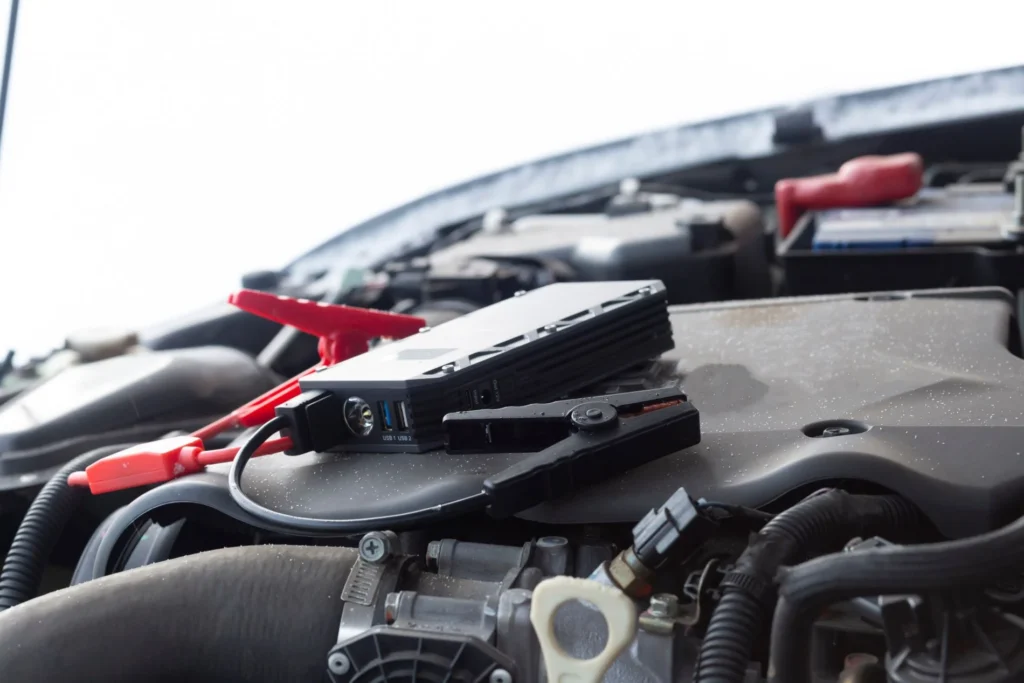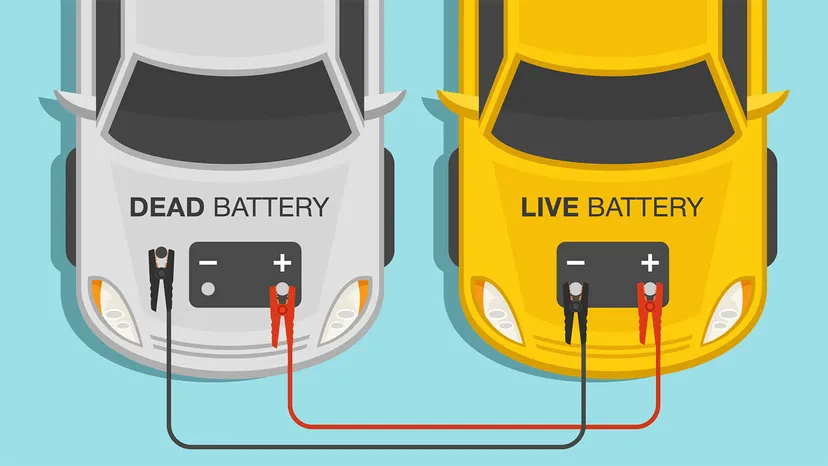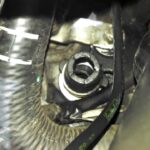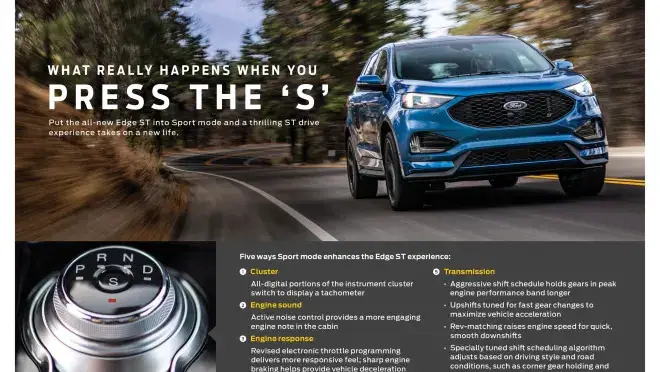How Far Can You Drive With A Dead Battery
If you’ve ever turned the key in your Ford F150, only to hear that dreaded clicking sound or see dim lights on the dashboard, you might be dealing with a dead or dying battery. It’s a situation that can leave many drivers wondering, “How far can I drive with a dead battery?” In this guide, we’ll dive into how car batteries work, what happens when they fail, and what you can do if your battery dies on the road.
Key Takeaways
It’s not possible to say how far you can drive with a dead battery because the car will shut down once the battery is depleted. A car battery can run for about 30 minutes to an hour without an alternator, but this is not recommended for long-term use.
If you jump-start your car, it’s recommended to let it run for at least 30 minutes. A healthy battery will regain and keep its charge as you drive.
Here are some things you can do to prevent a dead car battery:
- Check your battery and alternator regularly
- Look for common battery killers, such as age, temperature, and parasitic battery drain
A car battery can last about four weeks to two months before it dies if it’s left sitting. Most car batteries are date-coded with the month and year they were manufactured, but they usually don’t last longer than five years.

Understanding How Your Vehicle Battery Works
Your vehicle’s battery is a critical component that powers all the electrical systems in your Ford F150. It provides the necessary energy to start the engine and powers components like headlights, interior lights, and the radio. Once the engine is running, the alternator recharges the battery and powers these systems while you drive.
However, a battery no longer holding a charge properly can quickly leave you stranded if not addressed in time.
Can You Drive with a Dead Battery?
Strictly speaking, if your battery is completely dead, you won’t be able to start your Ford F150 at all. A dead battery prevents the starter from engaging, meaning you’ll need a jump start to get your vehicle running again.
That said, if your battery is weak but not fully dead, you may be able to start your vehicle and drive for a short distance, thanks to the alternator. But relying on a weak battery isn’t a long-term solution, as it can leave you stuck when you least expect it.

How the Alternator Can Keep You Moving
The alternator is your vehicle’s power generator once the engine is running. It recharges the battery and supplies power to your vehicle’s electrical systems. In theory, you could drive without a fully functioning battery if the alternator is in good condition. However, this isn’t a reliable plan.
Here’s why:
- Dependence on the Alternator: The alternator keeps your vehicle running, but it also depends on the battery for certain electrical functions. A weak battery can place extra strain on the alternator, causing it to overheat or wear out prematurely.
- Electrical Systems May Fail: Even with the alternator working, many electrical systems, like your headlights or air conditioning, may not function correctly without the battery’s backup power.
In summary, while the alternator can sustain your vehicle temporarily, it’s not a permanent fix. Your battery will still need to be replaced as soon as possible.
Symptoms of a Dying or Dead Battery
Knowing the warning signs of a failing battery can help you avoid getting stranded. Here are some symptoms to look out for:
- Dim Headlights: If your headlights seem weaker than usual, it may indicate that your battery is struggling to provide enough power.
- Clicking Noise When Starting: A rapid clicking sound when you turn the key usually means your battery doesn’t have enough charge to engage the starter.
- Slow Engine Crank: If your engine takes longer than usual to start or cranks slowly, this could signal a weakening battery.
- Dashboard Warning Lights: You may notice the battery warning light on your dashboard. This could be a sign of either a weak battery or alternator issues.
- Electrical Failures: If your radio, power windows, or other electrical systems aren’t working properly, a dead or weak battery could be to blame.
If you notice any of these issues, it’s best to test your battery or head to a mechanic to avoid an inconvenient breakdown.
How Long Can You Drive with a Weak Battery?

If you manage to get your truck started, you might be able to drive for a short distance with a weak battery, depending on how severe the issue is. However, the question isn’t so much how far you can drive, but rather how much time you have before your truck’s electrical systems start to fail.
- Best-Case Scenario: If your alternator is functioning well, you may be able to drive for a few miles without major problems. However, keep in mind that any extra load on your vehicle’s electrical systems, like turning on the air conditioning or headlights, could drain what little power is left.
- Worst-case scenario: If your battery is completely dead or close to it, you may only be able to drive a short distance before your vehicle shuts down entirely. The alternator alone may not be able to sustain all of the truck’s electrical needs.
It’s crucial to recognize that driving with a weak or dead battery isn’t advisable. If your battery fails while driving, your truck could stall, and you’d lose power to critical systems like power steering and brakes, making the vehicle difficult to control.
What to Do If Your Battery Dies While Driving
If your Ford F150’s battery dies while you’re driving, take these steps to get back on the road safely:
- Find a Safe Place to Pull Over: If you notice your battery or electrical systems failing, pull over as soon as possible in a safe location.
- Turn Off Electrical Accessories: Turn off your headlights, radio, and any other non-essential electrical systems to reduce the load on your alternator.
- Restart with a Jump: If your battery dies completely, you’ll need a jump start to get your vehicle going again. Keep jumper cables in your truck or a portable battery charger for emergencies.
- Head to a Mechanic: Once you’re back on the road, drive directly to a mechanic or auto parts store to replace the battery and have your alternator checked to avoid further breakdowns.

Preventing Battery Failure
To avoid the headache of a dead battery, routine maintenance is key. Here are some tips to help prevent your battery from dying unexpectedly:
- Regular Battery Checks: Have your battery tested every 6 months or as part of routine maintenance to ensure it’s holding a proper charge.
- Keep Terminals Clean: Check your battery terminals for corrosion and clean them as needed to ensure a good connection.
- Limit Short Trips: Frequent short trips can prevent your battery from fully charging. Take longer drives occasionally to allow the alternator to recharge the battery fully.
- Turn Off Accessories: Always make sure headlights, interior lights, and electronics are turned off when the engine isn’t running to prevent battery drain.
Conclusion
While your Ford F150’s alternator can keep you driving for a short time with a dead or weak battery, it’s not a sustainable solution. A weak battery can leave you stranded, potentially putting you in a dangerous situation on the road. To avoid this, stay on top of your vehicle’s battery health by recognizing the signs of failure and replacing your battery before it leaves you stranded.
For more expert tips on maintaining your Ford F150, visit Road Momentum, your trusted source for automotive insights and advice.
FAQ:
How long can you drive a car with a dead battery?
You can only drive a short distance, typically a few miles, with a dead battery, and it’s not recommended.
Can you drive a car on a dead battery?
Technically, you can drive briefly on a dead battery, but it’s unsafe and can lead to stalling or damage to the vehicle’s electrical components.
How far can you drive with a battery not charging?
You can drive a limited distance with a battery not charging, depending on the remaining battery charge and electrical demands, but it’s best to address charging issues promptly.
How long to let a car run after jumping the battery?
After jumping a car battery, it’s advisable to let the engine run for at least 10-15 minutes to allow the alternator to recharge the battery adequately.
















